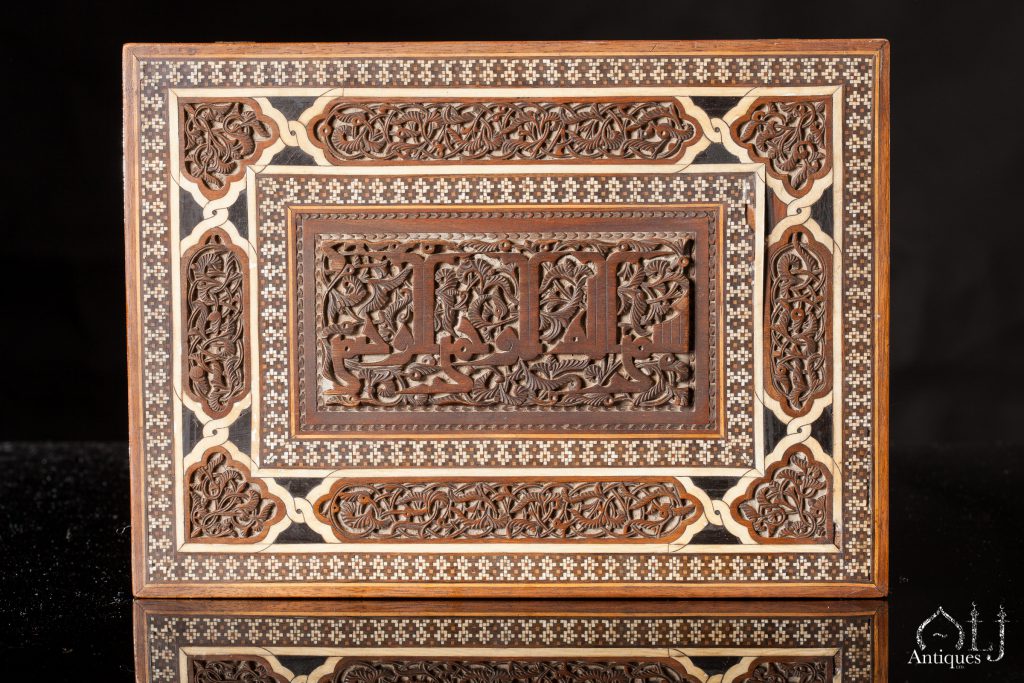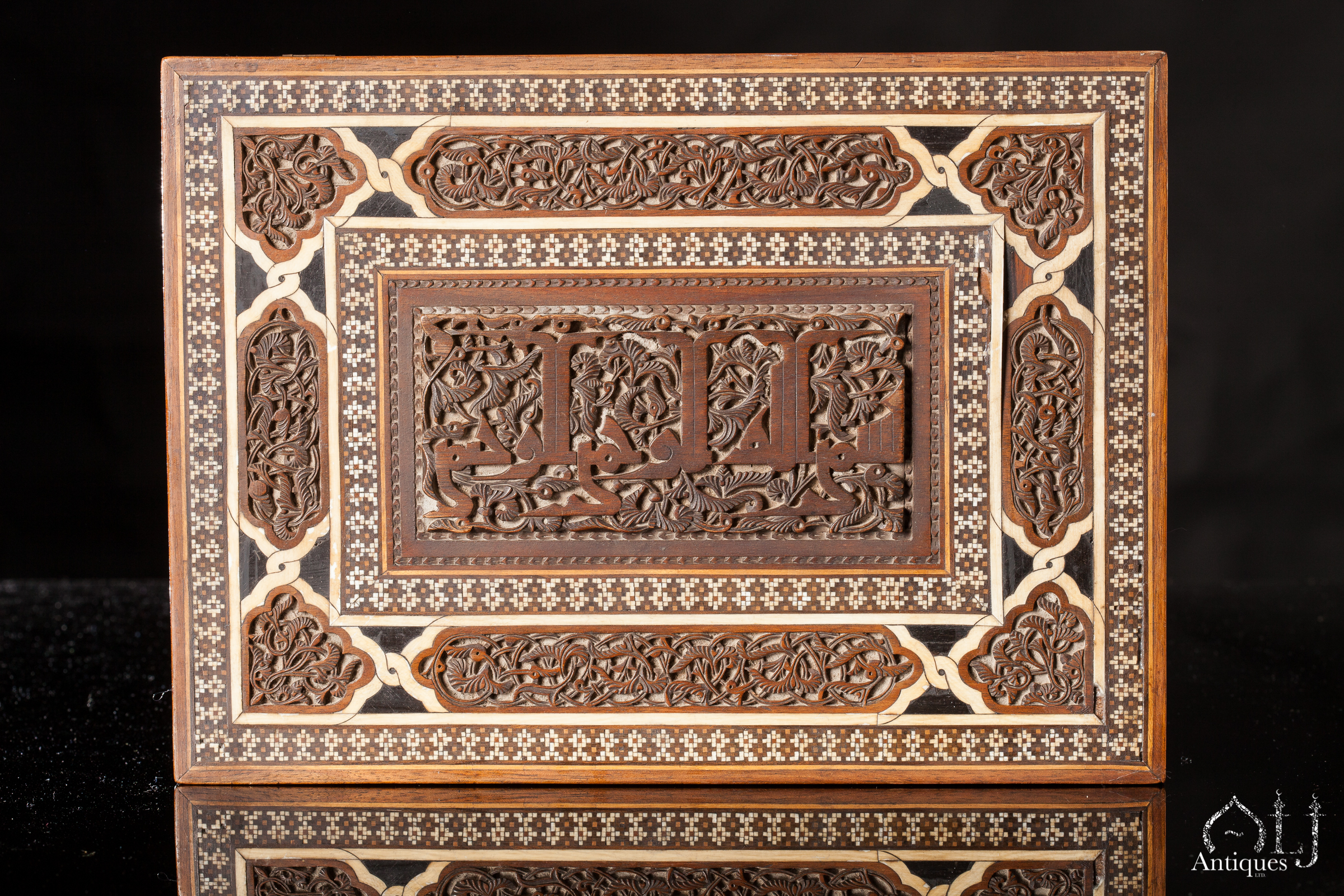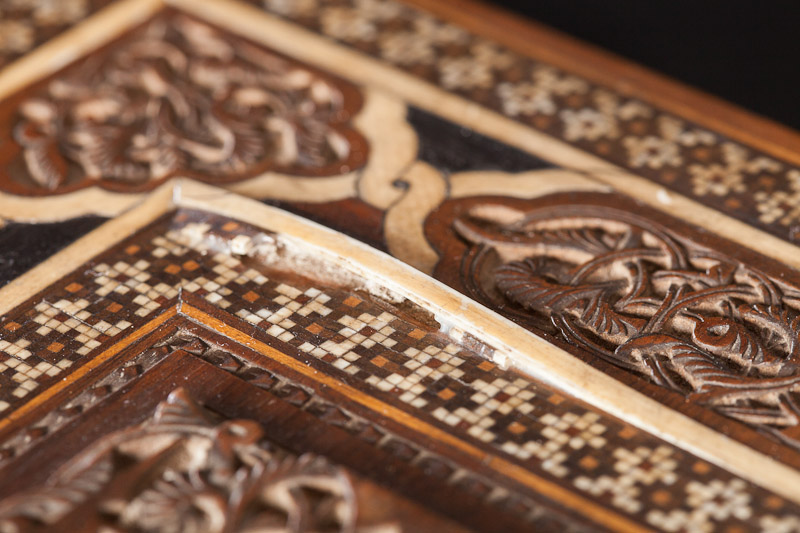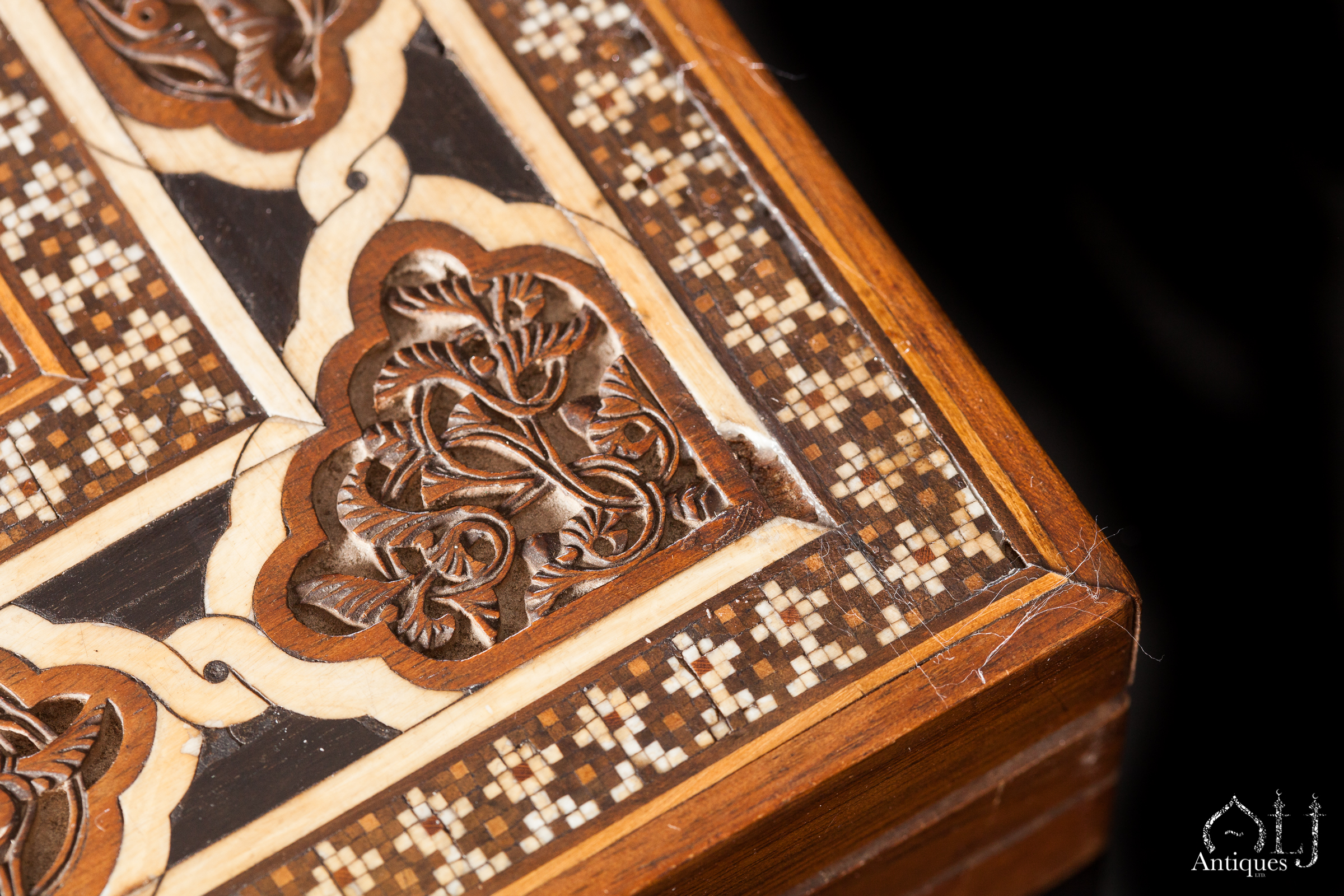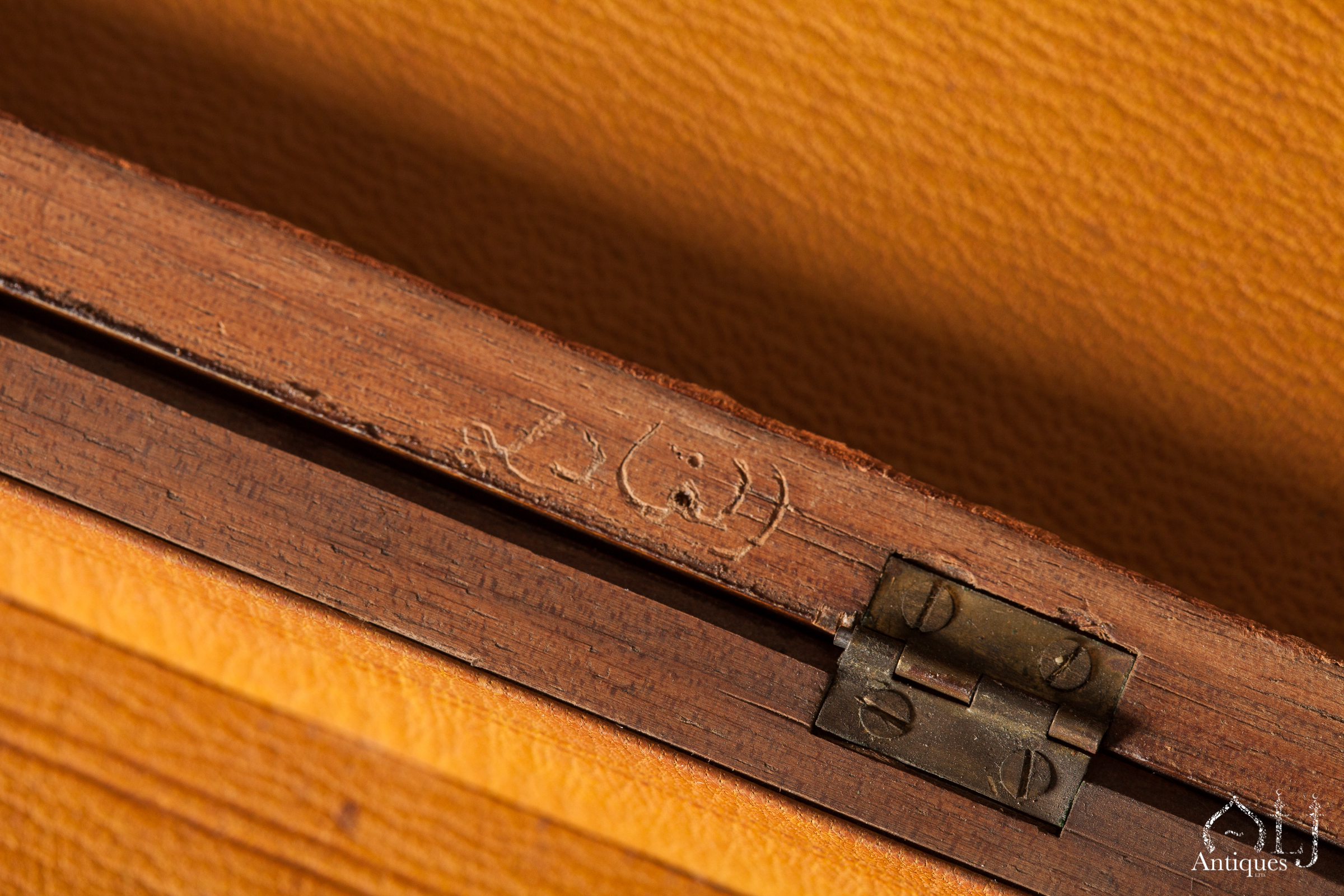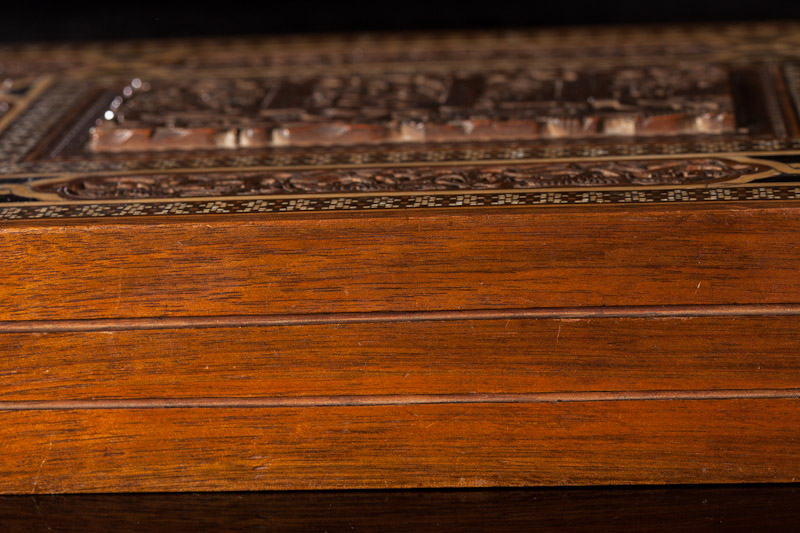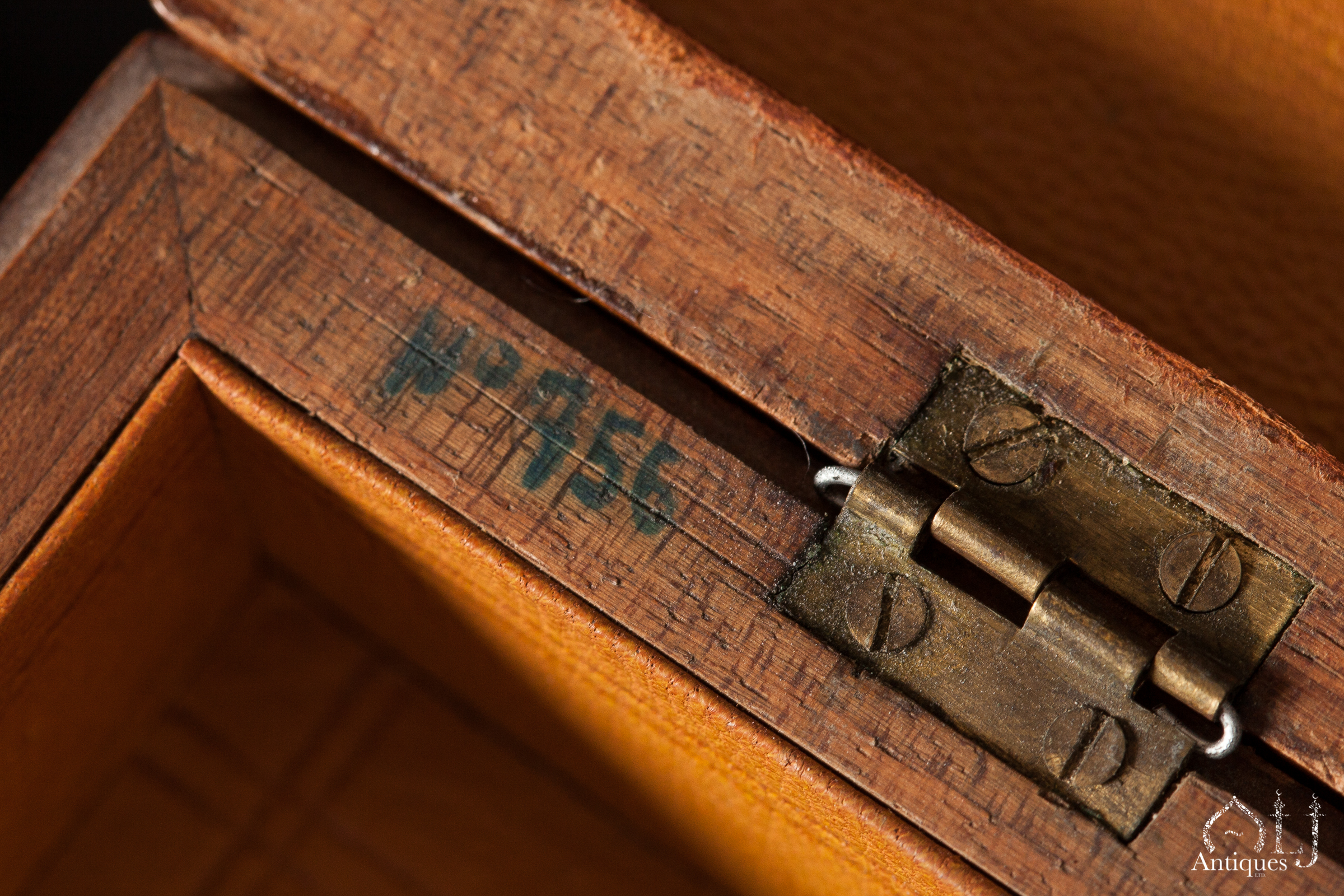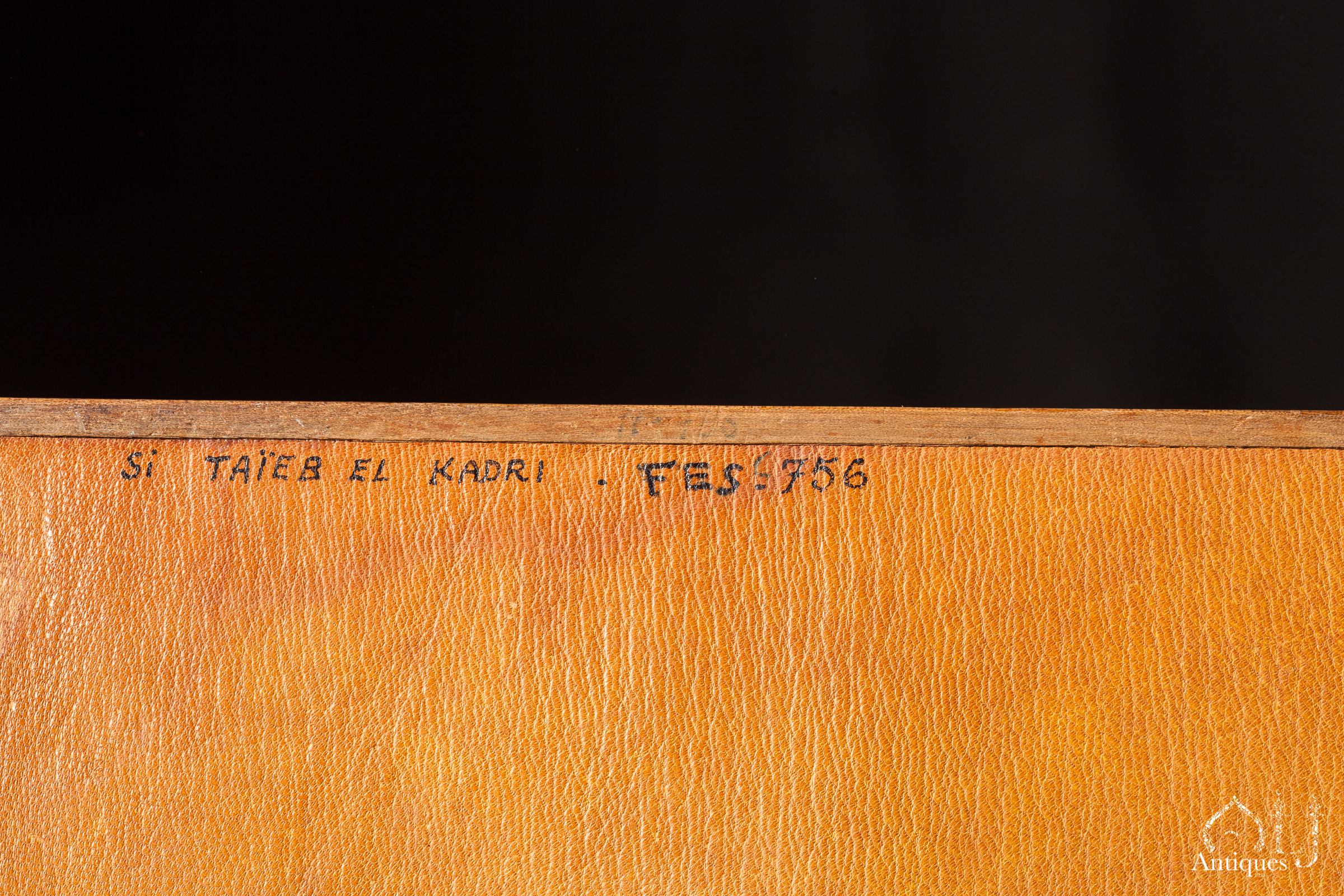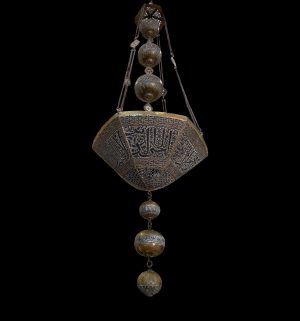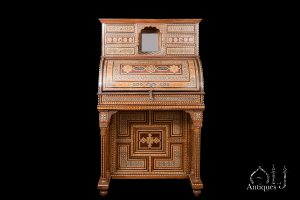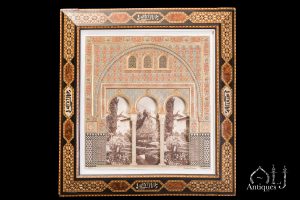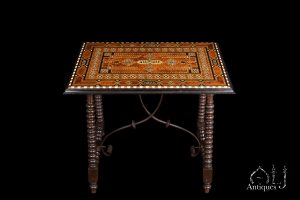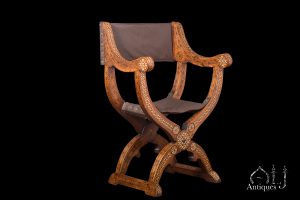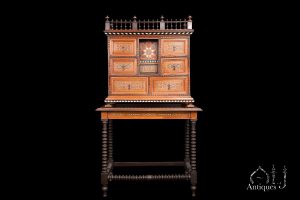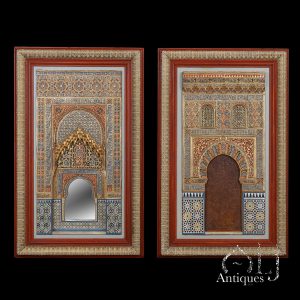Description
A Moroccan and Probably Nasrid Dynasty Recycled Wooden Fragment Repurposed into a Box
Origin: Probably Fez -Morocco or Granada-Andalusia, Spain
Period: Likely 15th and 19th Century
This extraordinary rectangular box is probably a rare example of recycled Islamic art.
Crafted from a much older, thick wooden fragment, likely from the Nasrid Dynasty (13th-15th century), it was later altered, possibly in Fez, Morocco, during the late 18th to 19th century.
The original fragment might have been part of a Quran box and later repurposed in Europe as a cigar box.
Historical Context & Design Analysis
The box demonstrates a fascinating blend of early Islamic craftsmanship and later functional adaptations.
The top of the box is intricately overlaid with nine carved wooden cartouches, with the central cartouche bearing the name of God (Allah), inscribed in raised, elegant Maghribi Kufic script.
The central part is beautifully inscribed by using the elegant Maghriabi Kufic style script, the Arabic inscription says:
(بسم الله الرحمن الرحيم)
Translates to: In The Name of Allah (God), The Most Gracious, The Most Merciful).
The surrounding eight cartouches are carved in a lower relief, featuring a symmetrical arrangement:
- Four cartouches facing the central piece at each corner.
- Two elongated cartouches placed above and below the central cartouche.
- Two smaller cartouches flanking the central cartouche on the left and right sides.
The wooden cartouches are bordered with exquisite micro-mosaic parquetry, ivory beadings, and twisted arch motifs composed of thin slices of ivory and ebony. In contrast, the plain sides of the box are marked by simple carved grooves, indicative of a later period.
Craftsmanship & Repurposing
The top surface’s exceptional quality and intricate detail reflect the artistic mastery of Islamic craftsmen from Southern Spain during the Nasrid period.
The thick decorative wood was likely salvaged from an earlier artefact and repurposed into this box, with additional wooden elements incorporated to form the base. The absence of locks or keyholes suggests the box’s minimal height and likely original function as a Quran box.
Historical Ownership
An Arabic and French inscription on the box indicates it was possibly owned by Si Taieb El Kadri (Tayyib Al-Qadiri), a prominent Moroccan Sufi historian born in 1712 and descended from Sheikh Abdul Qadir Jailani. His lineage traced back to Andalusia, and after the fall of the Umayyad dynasty, his family settled in Fez, Morocco.
Significance
The inscription on the central cartouche, crafted in the elegant Maghribi Kufic script, further emphasizes the box’s significance. The high-quality materials, including ebony and ivory, combined with the craftsmanship, suggest it was created or altered for an individual of notable status.
Condition & Key Details
- Dimensions: Unspecified (short height noted).
- Materials: Wood, ebony, ivory.
- Condition: Preserved with clear evidence of its historical repurposing.
- Origin: Likely altered in Fez, Morocco, during the 18th-19th century.
Conclusion
This remarkable box is not only a functional artefact but also a window into the cultural and artistic legacy of Islamic Spain and Morocco. It represents the enduring value of Islamic art, where elements of past civilisations are preserved and integrated into new forms.
(Registration for an item with a percentage of ivory, declaration reference no.58ZKMS58)

